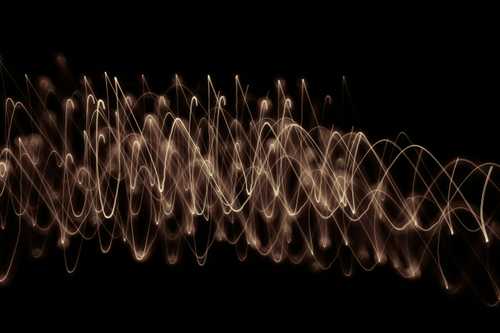
What is reverberation? Definition and examples
At its loosest, ‘reverberation’ has come to mean the continuation of a sound after it is produced. The word derived from the Latin verb verberare – “to whip, beat, or lash” – but, having entered the English language in the 1400s, it started to be used to describe sounds by the early 17th century.
This “persistence of sound” occurs as a consequence of sound waves being reflected from the objects that they encounter (see also: sound diffraction). An echo is a single reflection of a sound (say, a clap or a shout reflected from a building or a mountain) which returns with enough delay to make it “audibly distinct from the source sound”. However, reverberation is the reflection of sound from multiple surfaces: essentially, a number of echoes at once, which create a more scattered, ‘muddier’ effect.
“These reflections build up […] [then] decay gradually as they are absorbed by the surfaces” around them; this is particularly likely to happen in an enclosed space (whereas an echo can happen in either a closed or open space). As such, the effect can also be defined as “the accumulation of soundwaves in a space”.
Reverberation can have benefits in certain contexts – for example, the correct amount of reverberation can improve the sound quality of music, either live or recorded, for example by enhancing singers’ vocal range. Devices like plate reverberators were designed in order to capitalize on this effect. Originally a mechanical device which created reverberation (or reverb) without the need for a large room. A metal plate was suspended in a case, held taut with springs. Music would be fed into the plate via a transducer (an electronic device that converts energy from one form to another), causing it to vibrate. Recording these vibrations with contact microphones would provide a track of reverb with “a smooth and bright tone”. A spring reverberator created a similar effect, but, now, these effects can be produced digitally.
Meanwhile, reverberation chambers (or reverberation rooms) – large rooms with hard surfaces, expressly designed to create reverberations – have a variety of applications, in electrodynamics (a branch of physics concerned with the interactions of electric currents with magnets and other currents) as well as acoustics. Functions include determining the “sound power output of noise sources […] [and] response characteristics of microphones”, testing aircraft, space vehicles, and other equipment for their tolerance to high-intensity noise level fatigue, and measuring the effectiveness of sound-absorbent materials.
The importance of testing materials’ sound-absorbance extends to the architectural materials used in large spaces like concert halls or railway terminuses. This allows their levels of sound absorbance and reflection to be optimised appropriately; a space with too many sound-reflective surfaces (like concrete and plasterboard) will cause sound to linger by bouncing back and forth, negatively affecting audibility.
Adding porous materials like fiberglass foam or mineral wool to surfaces – or even plaster and drapes – can help make reflected sound waves decay more quickly, as the waves will penetrate these materials and be harmlessly “converted to heat through friction”. This means that listeners will be able to hear sounds which come directly from their sources, while the incidence of echoes and reverberations will be greatly reduced.
An anechoic chamber – in contrast to a reverberation chamber – has walls lined with an acoustically absorbent layer that absorbs reverberations so effectively that it may be completely silent inside. This environment can then be used to assess machines’ sound power; the sound levels of smoke alarms, train horns and fog horns; and how well loudspeaker and microphones reproduce a range of sounds. However, anechoic chambers can be disorienting: in the absence of any external sources of sound, a person quickly becomes aware of the sound of their own heartbeat. “A few minutes after that, you can hear your own bones grinding and blood flowing”; no-one has managed to stay in the most silent of anechoic chambers for more than an hour.
Featured photo by MARIOLA GROBELSKA on Unsplash
Earth.fm is a completely free streaming service of 1000+ nature sounds from around the world, offering natural soundscapes and guided meditations for people who wish to listen to nature, relax, and become more connected. Launched in 2022, Earth.fm is a non-profit and a 1% for the Planet Environmental Partner.
Check out our recordings of nature ambience from sound recordists and artists spanning the globe, our thematic playlists of immersive soundscapes and our Wind Is the Original Radio podcast.
You can join the Earth.fm family by signing up for our newsletter of weekly inspiration for your precious ears, or become a member to enjoy the extra Earth.fm features and goodies and support us on our mission.
Subscription fees contribute to growing our library of authentic nature sounds, research into topics like noise pollution and the connection between nature and mental wellbeing, as well as funding grants that support emerging nature sound recordists from underprivileged communities.
